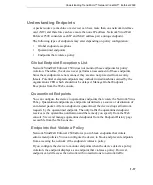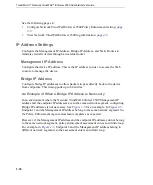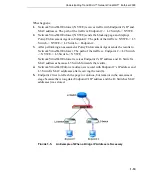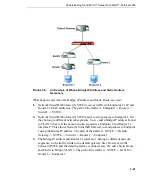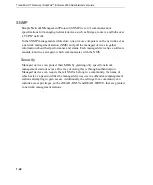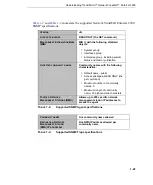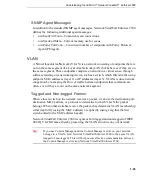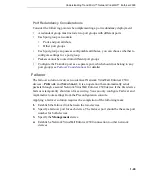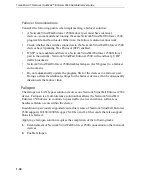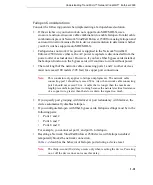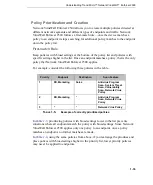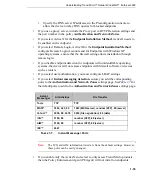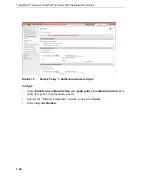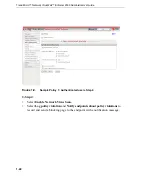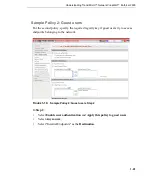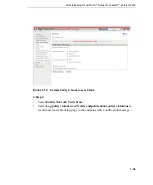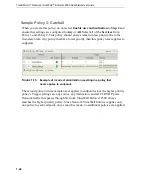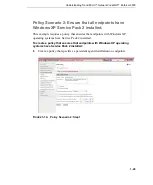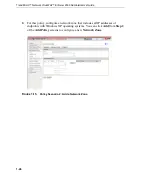
Understanding Trend Micro™ Network VirusWall™ Enforcer 2500
1
-
31
Failopen Considerations
Consider the following points when implementing a failopen-based solution:
•
If the switches on your network do not support auto MDI/MDI-X, use a
crossover and non-crossover cable combination to enable failopen. Invalid cable
combinations prevent Network VirusWall Enforcer 2500 from using failopen and
can result in network issues. Refer to device documentation to determine whether
your L2 switches support auto MDI/MDI-X.
•
Failopen does not work if no power is supplied to the Network VirusWall
Enforcer 2500 device (that is, the AC power receptacle is disconnected from the
power outlet or actual device). However, if you have fiber bypass cards installed,
the failopen function on the bypass cards will continue to work without power.
•
The total length of the network cable connecting ports 1 and 2 to other devices
must not exceed 100 meters (328 feet) for copper port connections.
Note:
This constraint only applies to failopen deployments. The network cable
connecting port 1 should not exceed 50 m. Also, the network cable connecting
port 2 should not exceed 50 m. A cable that is longer than the maximum
length prevents failopen from working because the natural electrical resistance
of a copper wire greater than that slows down the signal too much.
•
If you specify port grouping with failover or port redundancy with failover, the
device automatically disables failopen.
•
If you configure failopen with fiber bypass cards, failopen settings must be in the
following pairs:
•
Ports 1 and 2
•
Ports 6 and 7
•
Ports 8 and 9
For example, you cannot set port 1 and port 6 to failopen.
•
Resetting a Network VirusWall Enforcer 2500 device with failopen enabled
temporarily blocks the network connection.
describes the behavior of failopen ports during a device reset.
Note:
The thirty-second (20s) delay occurs only when resetting the device. Powering
on or off the device does not cause this delay.

